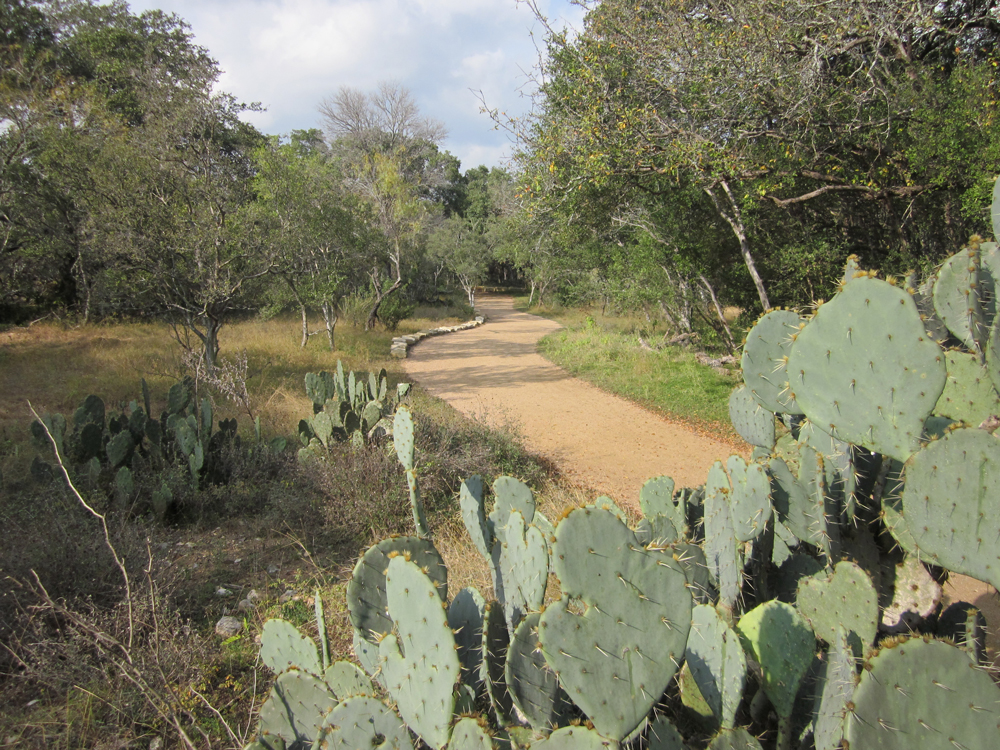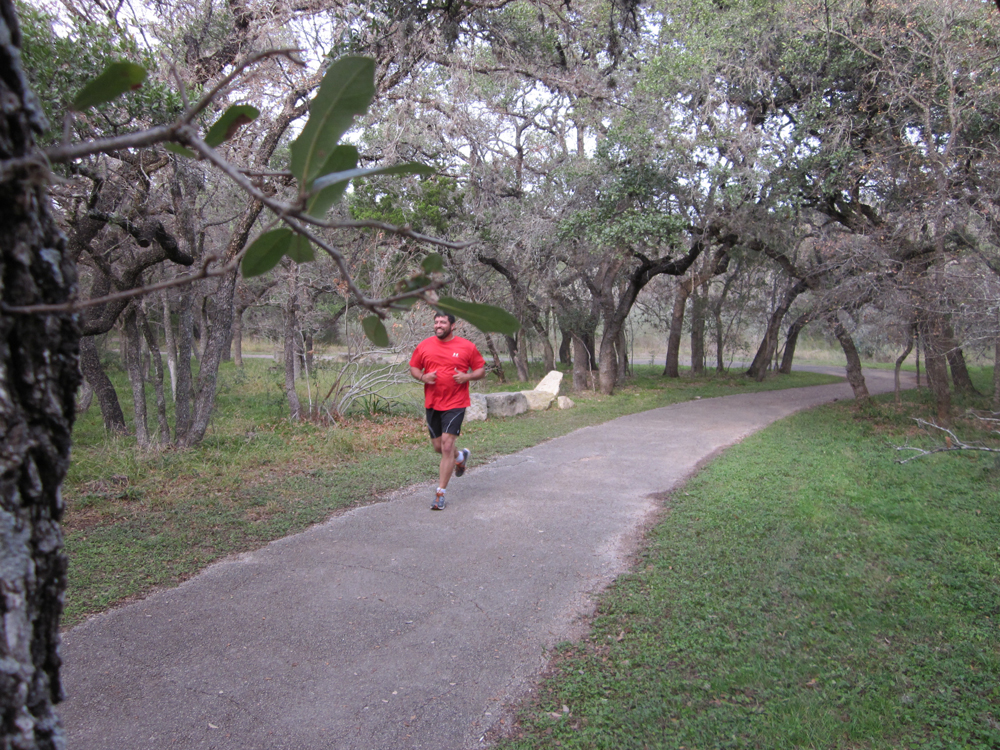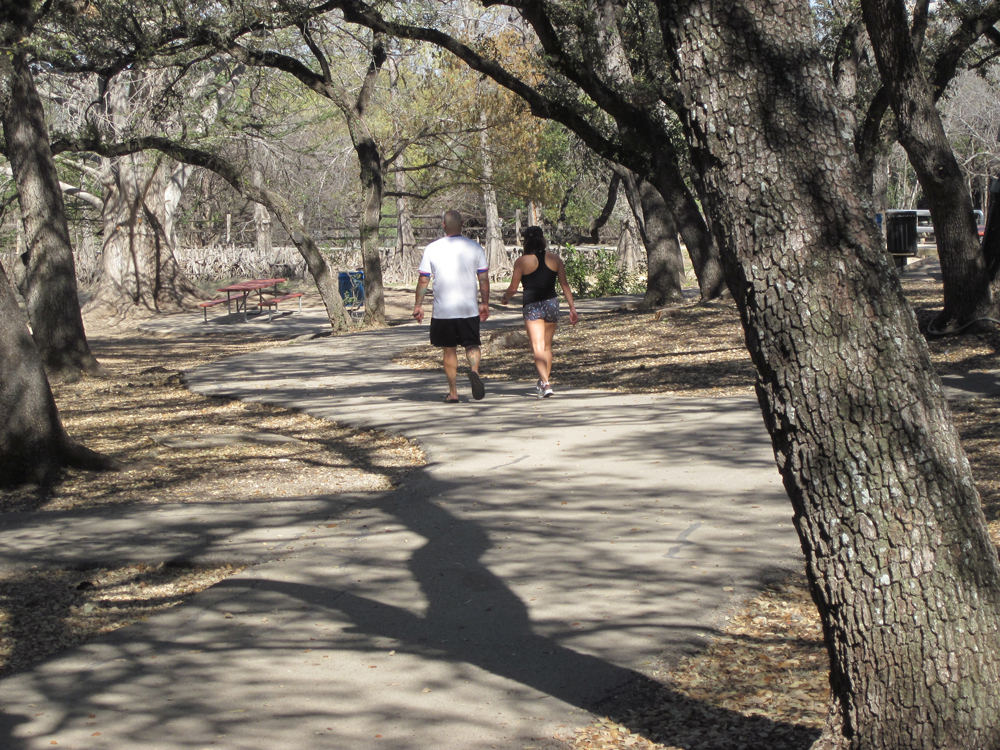By Catherine Hudgins
As San Antonio has grown out of its Center City roots, highway and interior road construction followed by subdivision upon subdivision of houses, shopping and more, has turned what was once lush green, open space into a virtual concrete city, similar to most cities in the country. And though San Antonio leaders identified years ago a critical need for a return to verdant, open land in the form of parks, it wasn’t until fifteen or so years ago, when 311 acres of such land ten miles north of downtown, in the midst of some of the toniest neighborhoods in the region became available, did the city’s mayor, Phil Hardberger, and other city leaders act on the citizen’s behalf.
Voelker Ranch is just such a “plot” of land. Once a dairy farm, Max and Minnie Voelker, the farm’s owners, resisted all temptation to sell to the next developer, as a sea of houses built up around their property. However, with their death and the placement of the property in a trust, the city acted and secured a portion of the ranch for just such a park, now called Phil Hardberger Park and Conservancy.



Parks for Every Taste

While avid golfers will find more than 30 private, public and semi-public courses to play, the metro area also boasts a broad range of public parks that meet other recreational needs as well. From City of San Antonio skate parks to a National Historical Park encompassing some of the oldest European-established missions in the United States, the area has the facilities and the weather to induce everyone to “get out there.”
Day Outings of Family Fun

Texans have always revered the outdoors and have always cherished strong family ties. Every community in the metropolitan area, large or small, provides park settings, playgrounds and accommodations for picnicking that encourage family gatherings.
From Schertz to Floresville, Castroville to Boerne, Helotes to Seguin, local, neighborhood and community parks await your family’s visit whether for a simple sandwich lunch and half an hour on the swings, an afternoon at the pool, or an all-day full-fledged, extended-family reunion, complete with friendly competition, well-smoked brisket, and a screened pavilion. Many of these parks have special picnic areas for large groups (often covered to provide cooling shade or shelter from unscheduled rainstorms or searing heat.
Max Starcke Park in Seguin is a fine example of these great all-purpose family-friendly parks. Designed by Robert H.H. Hugman, the landscape architect who designed the famed San Antonio River Walk, Starcke Park boasts picnic pavilions, a hike and bike path, golf course, and a wave pool to keep family members busy.
In New Braunfels, Landa Park offers families a variety of activity, including rides on a miniature train. A pint-sized train also operates in Brackenridge Park in San Antonio. A ride aboard the Landa Park Railroad or the San Antonio Zoo Eagle might be the perfect finale to cement a family’s memories of a great outing.
Outdoors, Overnight and Otherwise
Those who want to extend their outdoor adventure with an overnight stay will find plentiful opportunities to camp at parks located throughout the area. Many of the public outdoor venues that offer camping are managed by the Texas Parks and Wildlife Department. There are bound to be several such areas within an hour’s drive, regardless of where in the South Texas region you live.

Many of these state-managed parks, wilderness management and natural areas are also great places for hiking, rock climbing, and for swimming and boating in those bordering area rivers and lakes. A long weekend might be the perfect time to set up your tent and throw down your sleeping bag in Pedernales Falls State Park, Blanco State Park, or Enchanted Rock State Natural Area, where rock climbers and rappelling enthusiasts can employ their skills on the second largest granite outcrop in the United States.
Thanks in large part to the need to control flooding along Texas river basins, boaters and water skiers will find the metro San Antonio area literally awash with great venues for watersports. Though far enough afield to be reserved for a vacation or holiday trip, fishermen, boaters, skiers, and hikers will want to give Inks Lake near Burnet, or Choke Canyon Reservoir, south of the metro area on the way to Corpus Christi, a try.
Closer to hand and therefore accessible for a day’s fun at a time, Lake Placid, near Seguin, can be accessed via a public ramp under Interstate Highway 10, while Canyon Lake, located sixteen miles northwest of New Braunfels, has numerous access points for boats, as well as camping and picnicking facilities. Boating and fishing can also be enjoyed at Medina Lake, just outside Helotes. City-owned parks in Castroville and Boerne offer fishing, too. (Be aware that state fishing regulations apply everywhere you wet a line.)
Fishermen will also find plenty of other places to test their skill in the metro San Antonio area-from city, county, and state parks along the Medina, Comal, and Guadalupe Rivers to Braunig and Calaveras Lakes (run by the City of San Antonio) just south of the Alamo City off Interstate 37.
Hunters, too, will be happy to discover that, in addition to private leases, they may be able to take wild game on public lands: the Texas Parks and Wildlife Department offers strictly controlled hunting from September to March. While potential quarry ranges from rabbit, dove and quail to Russian boar, restrictions and access vary from year to year and location to location. Many are Special Permit draw hunts that grant the lucky winners a chance to hunt a wilderness management area otherwise closed to the public.
Flora and Feathers
For those who want to commune with nature rather than compete with it, there are many wilderness and nature parks in the region that are dedicated to preserving the native ecology, while educating people to its beauty and value. Dinosaur tracks uncovered by a recent major flood are visible along the Cibolo Wilderness Trail, which is part of the Cibolo Nature Center in Boerne, a prime example of this celebration of the local habitat, as are the Friedrich Wilderness Park and the Bamberger Nature Park, both in metro San Antonio and both notable not only for their native flora but for the wildlife it attracts-particularly the feathered variety of animal inhabitants.
Birding enthusiasts who relocate to the metropolitan San Antonio area may soon consider their new address to be heaven on earth. Practitioners of this most popular recreational activity will be thrilled to learn that the region lies beneath the largest of the three major North American flyways for migrating birds. Metro San Antonio is also well-placed on the boundaries between several ecological regions, giving local nature lovers real variety when it comes to native plants and the birds they support.
Great parks for adding to your lifetime list during the migration periods include Castroville Regional Park and Southside Lions Park. As previously mentioned, Bamberger Nature Park and Friedrich Wilderness Park are other good birding sites, as are Braunig, Calaveras, and Mitchell lakes-the latter body of water and surrounding wildscape is currently accessible only by arrangement through the San Antonio Audubon Society.
Fans of natural phenomena and parents looking for a way to spark their children’s interest in the natural world may want to pencil in a visit to the Old Tunnel Wildlife Management Area. From June to October, during tours led by Texas Parks and Wildlife Department experts, visitors can witness the nightly exodus of more than two million bats from an old railroad tunnel.
Living with History
For many Texans, the past is still a proud part of our heritage and lives; many parks in the metropolitan San Antonio area were created specifically to preserve that history. A visit to any of these parks or historical monuments can be educational and enjoyable, whether it’s a trip to the National Museum of the Pacific War in Fredericksburg, a pilgrimage to The Alamo-shrine of Texas freedom-or a visit to New Braunfels, where the local Conservation Society and others have done a superb job of preserving and restoring their pioneer heritage.
At Conservation Plaza, for example, nine buildings (originally erected 1849-1870) have been moved to the site, faithfully restored, and authentically furnished. The New Braunfels Conservation Society also operates the Lindheimer Home, built in 1850 on the Comal River. Originally, this museum was the home of Ferdinand Lindheimer, the father of Texas botany.
Numerous other public sites of interest to history fans, including several National Historical Parks, dot the region-from the San Antonio Missions and La Villita to Lyndon Baines Johnson’s Boyhood Home and a pre-Civil War frontier fort.
Therefore…
With pleasant weather all year and parks to fit every need and taste, there’s never a reason for not having outdoor fun here!


| Public Parks & Recreation | |
|---|---|
| Bexar County | |
| Bullis County Park | 27583 Old Blanco Rd, 78258 |
| Eisenhower Park | 19399 NW Military Hwy, 78257 |
| Friedrich Wilderness Park | 21385 Milsa Dr, 78256 |
| McAllister Park | 13102 Jones Maltsberger |
| Phil Hardberger Park | 13203 Blanco Rd, 78216 |
| Panther Springs Park | Wilderness Oak, 78258 |
| San Pedro Springs Park | 2200 N. Flores St. |
| Stone Oak Park | 20395 Stone Oak Pkwy, 78258 |
| Comal County | |
| Bulverde Community Park | 29815 Bulverde Lane, 78163 |
| Guadalupe River State Park, | 3350 Park Rd 31, 78070 |
| Kendall County | |
| Boerne City Lake Park, | 1 City Lake Rd, 78006 |
| Cibolo Nature Center | 106 City Park Rd, 78006 |
| Joshua Springs Park | 716 FM 289, Comfort 78013 |






